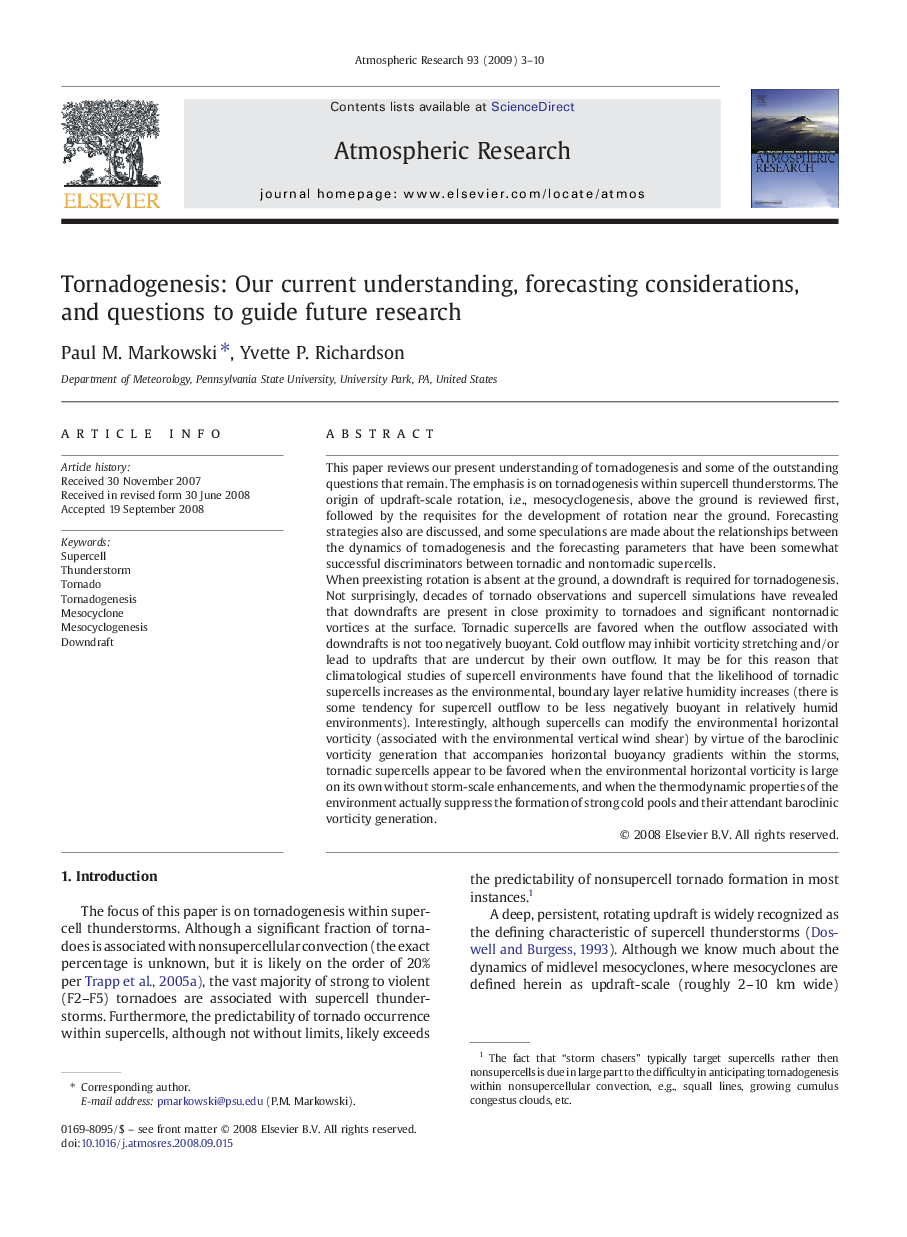| Article ID | Journal | Published Year | Pages | File Type |
|---|---|---|---|---|
| 4450699 | Atmospheric Research | 2009 | 8 Pages |
This paper reviews our present understanding of tornadogenesis and some of the outstanding questions that remain. The emphasis is on tornadogenesis within supercell thunderstorms. The origin of updraft-scale rotation, i.e., mesocyclogenesis, above the ground is reviewed first, followed by the requisites for the development of rotation near the ground. Forecasting strategies also are discussed, and some speculations are made about the relationships between the dynamics of tornadogenesis and the forecasting parameters that have been somewhat successful discriminators between tornadic and nontornadic supercells.When preexisting rotation is absent at the ground, a downdraft is required for tornadogenesis. Not surprisingly, decades of tornado observations and supercell simulations have revealed that downdrafts are present in close proximity to tornadoes and significant nontornadic vortices at the surface. Tornadic supercells are favored when the outflow associated with downdrafts is not too negatively buoyant. Cold outflow may inhibit vorticity stretching and/or lead to updrafts that are undercut by their own outflow. It may be for this reason that climatological studies of supercell environments have found that the likelihood of tornadic supercells increases as the environmental, boundary layer relative humidity increases (there is some tendency for supercell outflow to be less negatively buoyant in relatively humid environments). Interestingly, although supercells can modify the environmental horizontal vorticity (associated with the environmental vertical wind shear) by virtue of the baroclinic vorticity generation that accompanies horizontal buoyancy gradients within the storms, tornadic supercells appear to be favored when the environmental horizontal vorticity is large on its own without storm-scale enhancements, and when the thermodynamic properties of the environment actually suppress the formation of strong cold pools and their attendant baroclinic vorticity generation.
